GEOS 360 Hostage and SOS Rescue
When an Unexpected Emergency Occurs
Nautic Alert Gets You Help.
Real life pirates are a threat to your life and family, so why compromize protection? GEOS360 offers global personal travel safety and the ability to do something about this risk, quickly, efficiently, and for less than you think. In addition, Nautic Alert offers 2-way real-time messaging directly with GEOS, so responders can have full situational awareness when arriving.
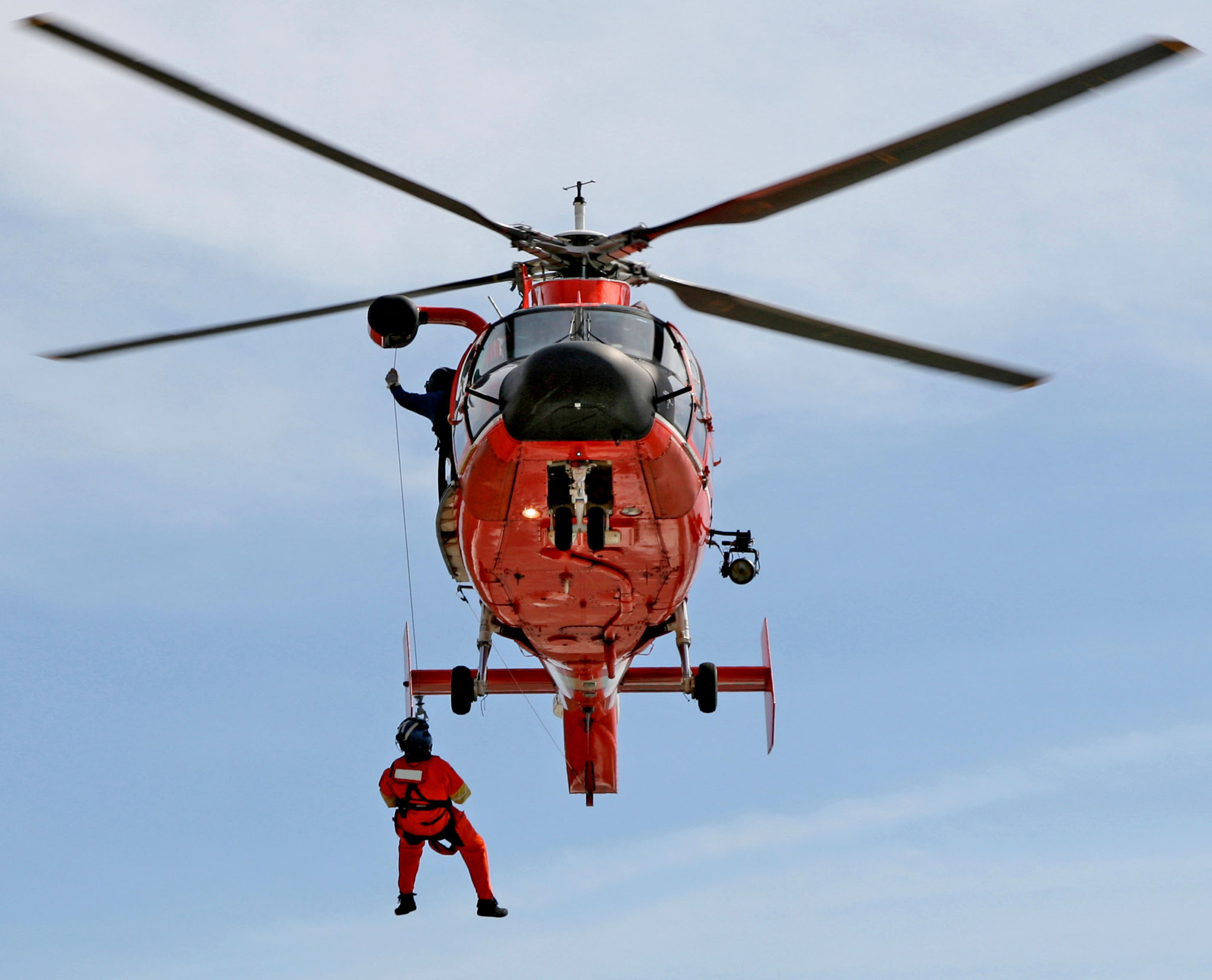
The Power of a Button

With the click of a button, Nautic Alert will send an Emergency SOS distress message to the GEOS International Emergency Response Coordination Center (IERCC) to initiate a request for emergency assistance.
The GEOS International Emergency Response Coordination Center (IERCC) provides 24×7, 365 days a year monitoring for Nautic Alert Hostage and Emergency SOS distress messages. The GEOS teams are all certified and trained First Responders, not “operators” that coordinate with Local Responders in over 120 countries.
The GEOS IERCC will make contact with emergency services based on the position coordinates communicated by Nautic Alert and will continue coordination efforts until the incident is resolved by first responders or their contracted tactical teams, and then closed by the GEOS IERCC.
The IERCC has highly redundant systems infrastructure based in an underground bunker just outside of Houston, Texas. Not only are their systems redundant, they are housed in a Tier III data center in the “bunker” with six redundant fiber providers, two separate power grids, UPS and generator back up. The bunker is called the most secure data center in the US.
How Does it Work?
Nautic Alert Insight X2 is integrated with the GEOS enterprise Global Event Management (eGEM) platform, and it is simple to use and yet – fast, powerful, and far reaching!
Anybody on board needing to declare an emergency will simply touch the Nautic Alert Insight touchscreen and press and hold the Emergency SOS button for a couple of seconds. Nautic Alert will then send the Emergency SOS distress message to GEOS with your location and other pertinent information. Upon receipt of the distress message, the GEOS IERCC will notify Nautic Alert that the message was received, as shown below, and immediately initiate communication with the Nautic Alert customer, in an effort to gather additional information.
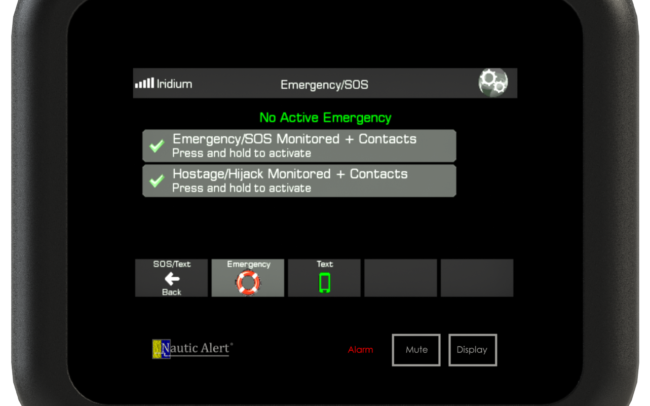
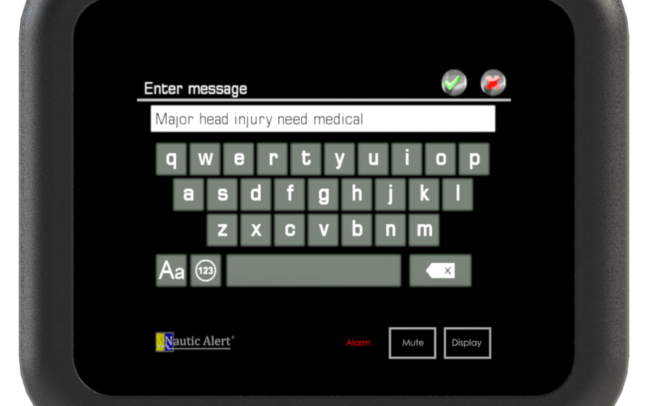
The integrated application enables the ability for the person declaring the emergency and GEOS to interact with each other using text messaging from the Nautic Alert touchscreen interface. As shown below, interactive messages are displayed on the Nautic Alert Insight X2 touchscreen.
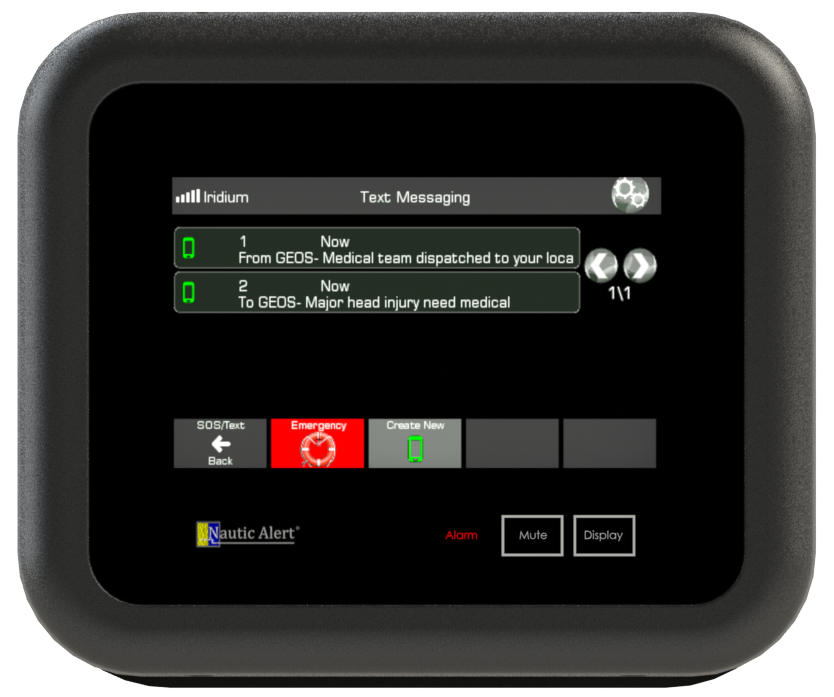
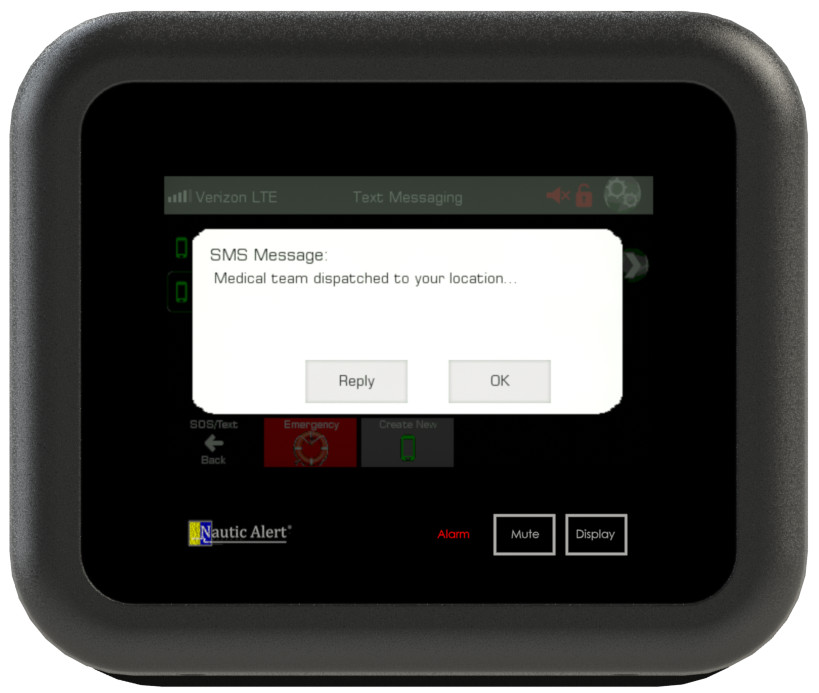
The text messaging feature can also be used to message other recipients such as a family member.
Don’t Wait Until A Rescue Is Needed
Nautic Alert X2 is not a replacement for an EPIRB or PLB, but is a first resort enabling a boater to declare an emergency condition and two-way message with the IERCC from the built in QWERTY keyboard on Insight, for proactive behavior before a rescue is needed. If you wait, communications may not be possible at a later time.
Notify, setup a check-in interval, and communicate message details to the IERCC, friends and family.
SAR Product Comparison
| Search-And-Rescue and Man-Overboard | Nautic Alert | Competitor |
|---|---|---|
| SAR with message received verification |  |
|
| SAR with one-way unverifiable message delivery |  |
|
| SAR with 2-way text messaging to US-based GEOS IERCC |  |
|
| SAR with location reporting redundancy |  |
|
| SAR with current location only reporting |  |
|
| SAR with global satellite coverage |  |
|
| SAR with land-based radio beacon dependency |  |
|
| SAR distress frequencies vary by location |  |
|
| SAR with local authority or privately-contracted GEOS SAR team |  |
|
| SAR with local authority response only where available |  |
|
| SAR with GEOS plus alert recipients notification redundancy |  |
Wireless Siren Network Sync
An emergency activation on Insight will work with Nautic Alert’s Wireless Siren Network Sync feature. This is very useful for providing audible and visual indicators throughout the boat.
Communications Reliability
Nautic Alert works with Iridium’s low-orbit satellite network, for superior reliability and low-latency. Nautic Alert utilizes retries from the device so all transmissions succeed. Additionally, Iridium’s truly global coverage coupled with 2-way communications enable message delivery confirmation and messaging with friends and family for superior global communications.
Communications Redundancy
When an emergency event occurs, GEOS is one of several possible alert recipients. Every alert recipient listed in Insight’s alert contact list will also receive detailed position data. Coupled with global text messaging, any contact with text messaging can easily message 2-ways with Insight right from their phone.
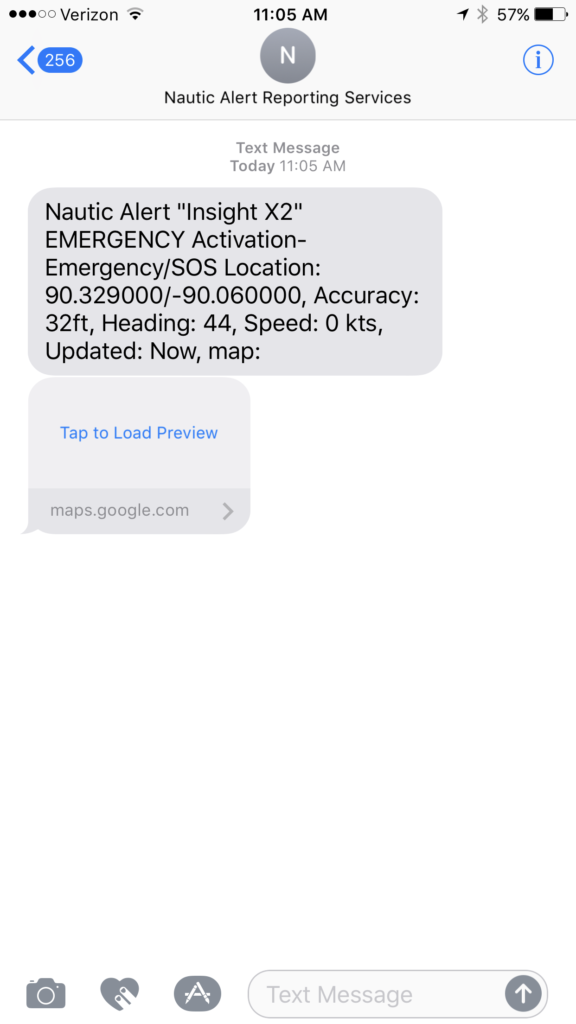
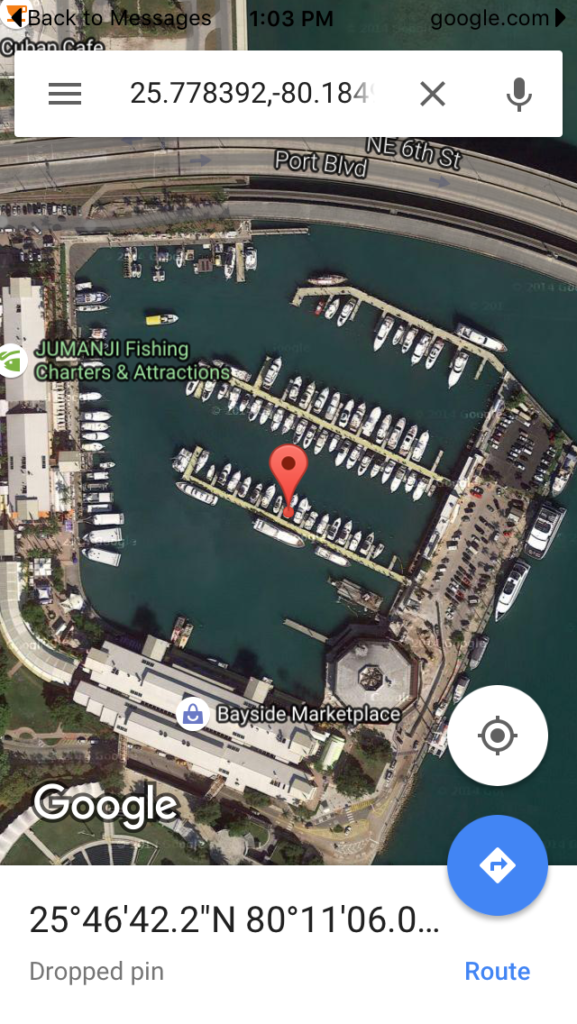
During an emergency, location updates and messages are sent out every 10 minutes so friends and family can stay up-to-date. These location updates are immediately accessible in the MyInsights Web Portal Vessel Tracking Interface. See Vessel Tracking for more details.
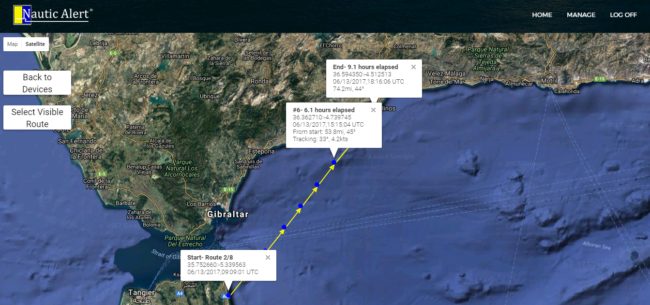
Location Redundancy And Accuracy
Upon receiving a distress message, Nautic Alert’s advanced cloud solution can choose up to 4 position references to use when communicating to GEOS and alert contacts to describe the vessel’s location. This includes the current reported position from the device, but if unknown, it could use the last reported position captured from the device, the previous tracking entry stored in the cloud database, and, in a worse-case, Iridium-based geo-location inherent in the message originating from the device and captured by Iridium’s network. This enables 3 redundant positions to be used when reporting the event, and each contain the vessel’s heading, speed, timestamp of location, and most important, expected positional accuracy, so a worse-case search circumference can be known.
Knowing a worse-case positional accuracy is the result of using next-gen GPS technology, which is not available on many GPS solutions commonly used in maritime networks and equipment. This technology also enables Nautic Alert to filter out weather-related position errors so that overwhelming accuracy and precision guides reported location updates. Nautic Alert uses a WAAS-enabled GPS, so in many cases, your reported position is accurate within a few feet.
function goBack() {
window.history.back()
}
